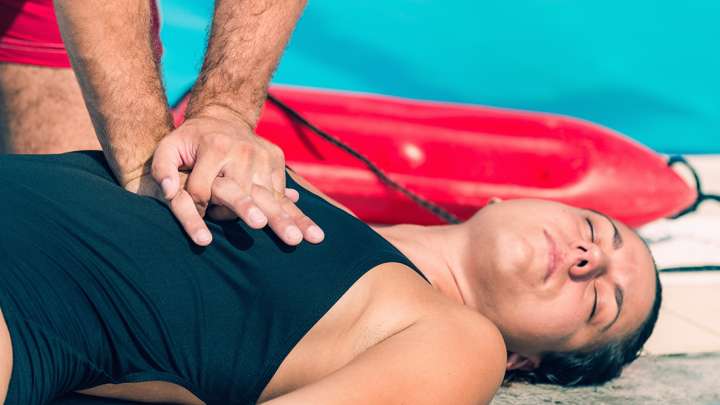
Rescue breathing is what is most commonly known as “mouth to mouth” resuscitation. It is actually a part of CPR, although recent studies have shown it may not be as necessary as originally thought.
CPR stands for Cardiopulmonary resuscitation. This means it is used as a way of using compression techniques on the chest of somebody whose heart has stopped beating.

How does the rescue breathing work?
Most people who haven’t experienced an emergency that requires CPR almost always associate rescue breathing with CPR. However, in reality, this is very rarely the case, which will be explained later.
When rescue breathing or mouth to mouth is performed properly, the individual performing it will give two breaths for every 30 chest compressions.
The head should be tilted back, and the person performing will pinch the patient’s nostrils and cover their mouths with their own. The first rescue breath should be given for only a second and depending on whether the chest rises or not, further procedure will follow.

Can anyone perform rescue breathing?
While it may look fairly simple on TV shows, rescue breathing should only be done by someone who is fully trained and experienced. If an untrained person attempts to rescue breathing, they will more than likely cause more harm than good.
This is due to the fact that there is an exact method used in rescue breathing various steps that need to be taken. You need to know when to give breaths, how long to give them, and follow a rhythm while giving chest compressions.
How NOT giving rescue breathing can save a life
It is completely natural to feel uncomfortable about performing rescue breathing. Many people assume that should someone collapse due to a heart attack, mouth to mouth has to be given in conjunction with compressions. This is not the case, and at times, can cause more complications, especially if it is done incorrectly.
Discomfort regarding mouth to mouth can mean time wasted as people panic about putting their mouths on someone else’s when in reality, chest compressions alone have now been shown to be sufficient while waiting for paramedics to arrive.

How important is rescue breathing when performing CPR?
While rescue breathing is still taught in most CPR training courses, it is actually not as important as previously thought. CPR is about getting the heart to start beating again. Chest compressions are most vital in making this happen. This is why basic CPR does not include rescue breathing and hands-only resuscitation can save a life.
It can be done using a simple rhythm and is not as complicated as rescue breathing. If you, as a bystander, witness someone collapse, you can ultimately save a life without using your mouth. Because CPR is about getting the heart started again, rescue breaths are not really required.
When is rescue breathing necessary?
While more and more research suggests that rescue breathing is not as important in CPR as originally thought, it is still taught in some First Aid courses as there are cases where it can be beneficial and may save a life.
This applies to cases where the heart has stopped due to a lack of oxygen. In this case, merely using chest compressions are somewhat useless as there is no oxygen in the blood leading to the heart.
Children and rescue breathing
There are a few situations where rescue breathing is vital. In children especially, rescue breathing is usually required because most children have healthy hearts and the reason behind a need for CPR is to usually to do with a respiratory problem.
Drowning is one of the most common causes of accidental deaths in young children, and rescue breathing is vital to keep a child alive while waiting for paramedics, in conjunction with chest compressions. This also applies to choking and other serious respiratory complications.
Adults and rescue breathing
Rescue breathing is also often required in certain situations where adults have stopped breathing, including asthma attacks, severe allergic reactions, and drug overdoses.
It is of the utmost importance, however, to be trained properly in rescue breathing before attempting it.
